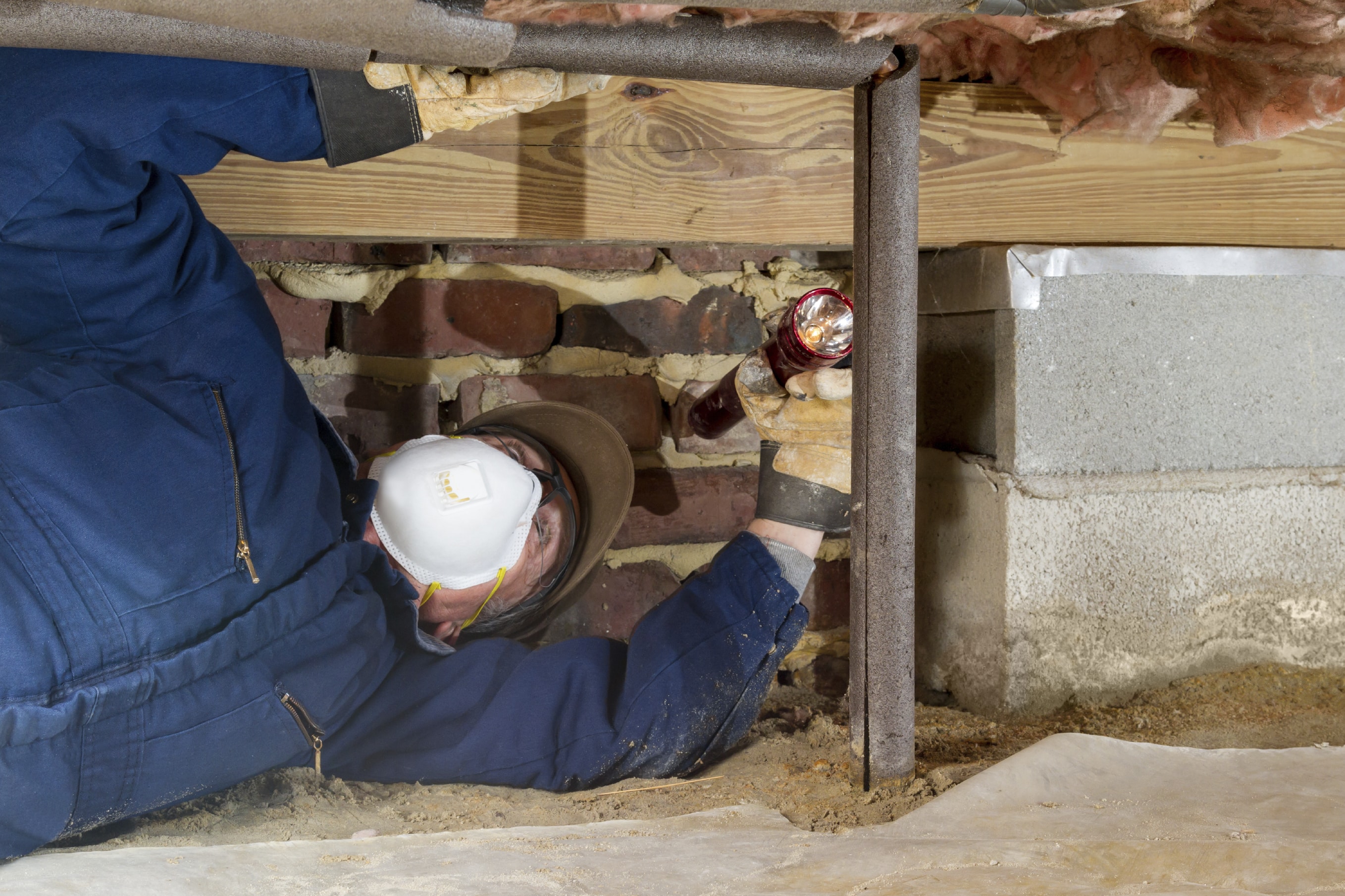When’s the last time you moseyed on down to your crawl space? We’re guessing everyone has the same answer to that: hardly ever, if you can help it. And if you’re anything like us, you might even still be getting over your childhood fear of the confined, oft-neglected spaces.
Out of sight, out of mind. That’s the general attitude, and we can’t blame you for it. But there are several reasons homeowners should check in on crawl spaces on a more regular basis — because despite the short, unpleasant time you’ll spend there, it could mean a significantly more comfortable home with a positive impact on your wallet, to boot.
What happens when crawl spaces are neglected?
Crawl spaces are, by definition, dark, dank, musty, and often times moist. (If you look it up in the dictionary, you’ll likely get a different definition, but that’s the one we’re sticking with.)
Because they live underground, crawl spaces are a natural breeding zone for the following unpleasantries when neglected:
Moisture
Moisture in the crawl space can come from a myriad of sources: running water, standing water, or moisture evaporating from the floor. In high-humidity areas and those prone to flooding, moisture is even more of a threat. And the more moisture that builds up in the space, the greater the likelihood of the inevitable beast: mold.
Moisture and mold in the crawl space have the potential to rot structural elements, seep into the house, and torment your indoor air quality. Even when the crawl space is closed off from the house, conditioned air flows steadily between the two under the right conditions. And while venting your crawl space can aid in deterring the smell, the right variance in humidity between indoors and out forces moisture to evaporate up through the ceiling and into your home.
Dust and dirt
Dust and dirt are no stranger to crawl spaces. And, when left to their own devices, can wreak havoc in significant ways.
Any exposed dirt in the crawl space is a prime vehicle for holding moisture. Installing a vapor barrier to shield exposed dirt from moisture is the first step to eradicating negative consequences. In addition, if any of your HVAC piping or ducts reside within the crawl space, they’re a guaranteed transporter of dust and dirt particles into your home unless the supply and return ducts are properly sealed.
Rodents/insects
Everyone’s favorite topic: the creepy-crawlers and four-legged buggers roaming around in the crawl space.
But they’re doing more than just roaming under shelter. First, any existing vapor barriers, insulation, or ducts are threatened by termites, rats, and other critters looking to chew. Second, these critters use the crawl space as their home — which means their residue is in the air, headed into the house through any poorly-sealed ductwork. Air quality: beware.
Out of sight, out of mind — right? Hardly. The damage done by neglecting a crawl space is likely affecting you more than the eye can see.
There’s still hope for the crawl space.
Don’t write the space off as a lost cause just yet. There’s a solution to your crawl space woes: crawl space insulation. (Cue the audience applause.) Properly-installed insulation will provide the following benefits:
Improved comfort
If the rooms above your crawl space often feel warmer or colder than the rest of the house, the crawl space is the likely offender. Insulating the crawl space will lead to fewer drafts and cold spots in the rooms above, as temperature is regulated.
Improved air quality
We mentioned the potential that exists when dust, dirt, moisture, and rodents are left to their own devices. Pollutants in your air often lead to health issues such as asthma or allergies. Fret not: the air you breathe in will be cleaner with a well-insulated crawl space. Insulation will protect the walls and ductwork to keep the bad air out.
Save energy
Each time a duct leaks or condensation builds in the crawl space, your HVAC equipment is forced to overcompensate, working hard to regulate the air in your home. This equates to a significant loss of energy and an overall inefficient system. Proper insulation helps regulate the crawl space’s atmosphere, and is named by Energy Star as the second largest opportunity to save energy in your home, second only to insulating attics.
Save money
By ensuring the efficiency of your heating and cooling systems and thereby decreasing energy usage, you’ll be delighted at the savings on your monthly bills. In addition, proper vapor barriers, venting, and insulation will create a proactive defense against the openings that rodents and insects use to enter the home, decreasing the likelihood of frequent calls to pest control pros.
Getting up close and personal with your crawl space
Don’t be a stranger to your crawl space — let the moisture, dust, dirt, and rodents take that role from you. Getting to know how your crawl space is affecting your home can lead to changes that significantly improve your comfort, and decrease your energy spend.
Even in crawl spaces where insulation exists, “old school” methods including fiberglass batt insulation not built to withstand moisture and likely deteriorating, failing to do its job. Insulating a crawl space is a moderate-to-difficult task for DIY homeowners — to ensure it’s done well and done right, it’s best to consider hiring an expert, who can also ensure ductwork is sealed and the crawl space is set up with a vapor barrier and proper venting. The investment now is guaranteed to pay itself back in no time, in comfort and savings.

